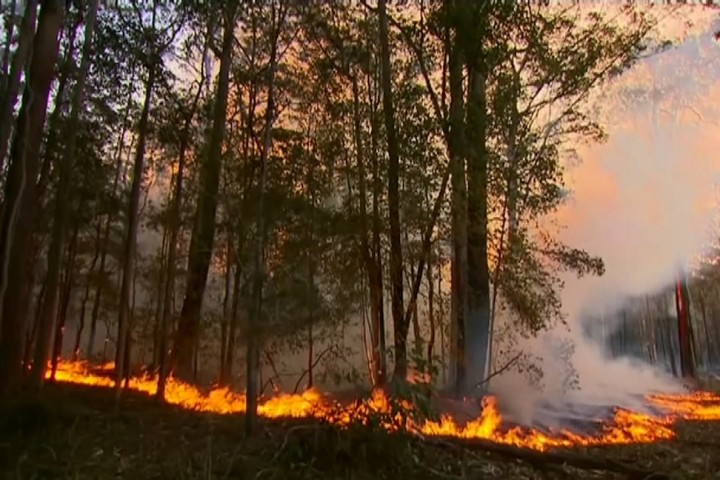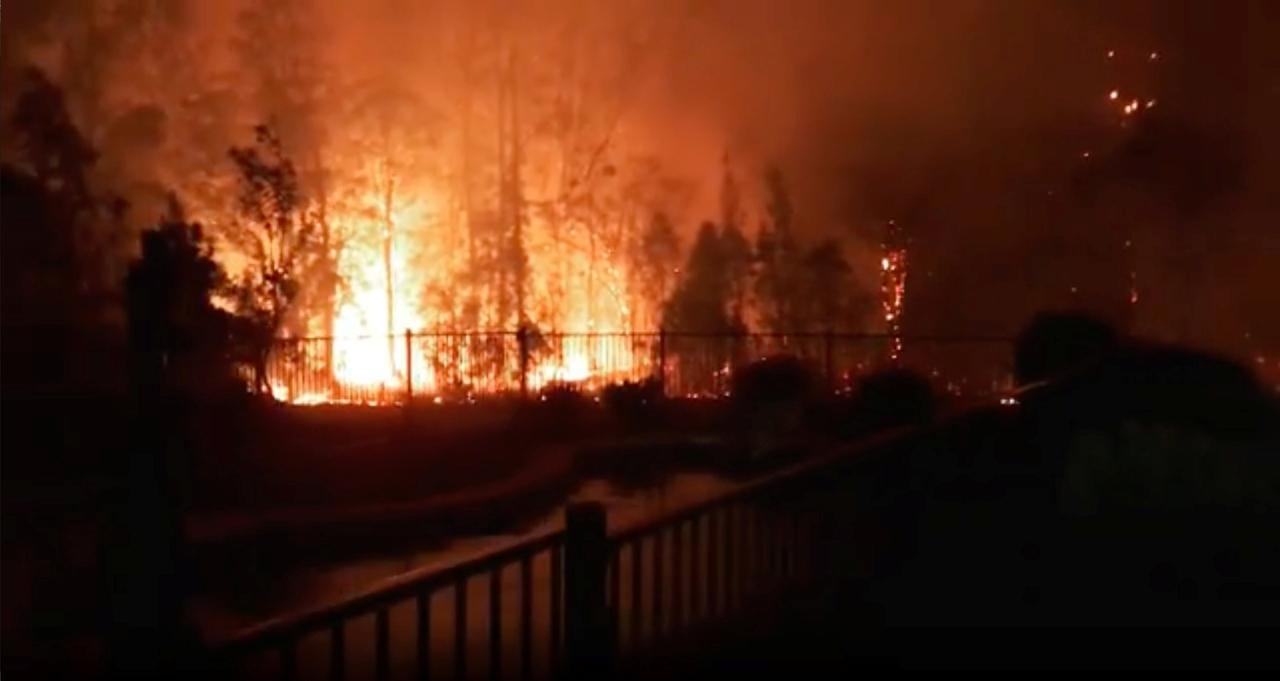A terrifying cocktail of raging wildfires and worsening weather conditions in Australia is heading for Sydney and the Blue Mountains, authorities have warned.
Three people have already died in the fires and New South Wales Rural Fire Service (NSW RFS) has said that high temperatures, strong winds and low humidity are making conditions even more dangerous, with the situation getting increasingly worse and expected to peak on Tuesday.
Firefighters have told people to take action now because they "may not get help" on Tuesday.
"Catastrophic is the highest level of bush fire danger. Homes are not designed to withstand a fire under these conditions," they said.
The "catastrophic" notice has been issued for Greater Sydney and Greater Hunter, including the Blue Mountains and central coast areas.
Even larger swathes of the country's most populous state are expecting severe and extreme fire dangers. A statewide "total fire ban" is place for Monday and Tuesday.
The NSW RFS wrote on Twitter: "Tuesday 12 November will be a dangerous day. Widespread areas of severe and extreme fire danger.
"With so many fires already burning, homes and lives will be at risk. If you are threatened by fire, you may not get help. Start taking action now."
It is the first time the 'catastrophic' warning has been used since the fire danger ratings were introduced in 2009.
Bushfires in New South Wales have killed three people and at least 150 homes have been destroyed since Friday, when a record number of emergency-level fires were declared in the state.
More than 30 people are injured and about 350 koalas have been killed in the town of Port Macquarie in New South Wales.
Prime Minister Scott Morrison praised the work of firefighters, volunteers and members of the community but spoke of challenging days ahead.
Speaking at an evacuation centre in the town of Taree, he said: "There is a long way to go and Tuesday is looking more difficult.
"And that is not only trickier in New South Wales, we know of similar types of conditions that we are seeing in Western Australia on Tuesday as well."
Among those who died was a 69-year-old woman, Vivian Chaplain.
"She was in absolute panic. She said, 'We're on fire. There's fire everywhere. I need the boys here now,'", said her daughter-in-law, Chrystal Harwood, who was the last to speak to her before her death.
"Before I even got to tell her to just get out, she'd hung up on me. I couldn't get back through to her. I tried so many times."
The road to Mrs Chaplain's house was described as a "tunnel of fire" in an appeal for help on social media.
She died in hospital after being found unconscious with serious burns.
Rural fire service commissioner Shane Fitzsimmons said the most intense fires have been seen in the northeast of New South Wales, where flames have been fanned by strong winds.
He added that firefighters found a body in a burned car near Glen Innes on Saturday.
Five others who were missing have reportedly been accounted for.
More than 70 fires were burning in New South Wales on Sunday morning and, while none were at emergency level, 36 were not under control.
More than 50 fires were burning further north in Queensland on Sunday morning - and the lightning of any outdoor fires and certain activities that could cause fires have been banned in 42 local areas across the state.
Dozens of bushfires were reported across New South Wales with at least 49 of those fires reported as uncontained.
Queensland Fire and Emergency Services acting commissioner Mike Wassing said in a statement: "We're experiencing tinder box-like conditions across much of the state and all it takes is one spark to start a fire that may burn for days."
Almost 5,000 homes have been evacuated in Queensland over the last 48 hours with many residents unable to return, according to the Australian Broadcasting Corporation.
The annual Australian fire season which peaks during the Southern Hemisphere summer has started early after an unusually warm and dry winter.
Mr Fitzsimmons said little reprieve in fire conditions could be expected over the next week or throughout the summer months of December, January and February.
He continued: "The forecast for the balance of the season continues to be driven by above-normal temperatures (and) below-average rainfall to dominate over the coming months."



